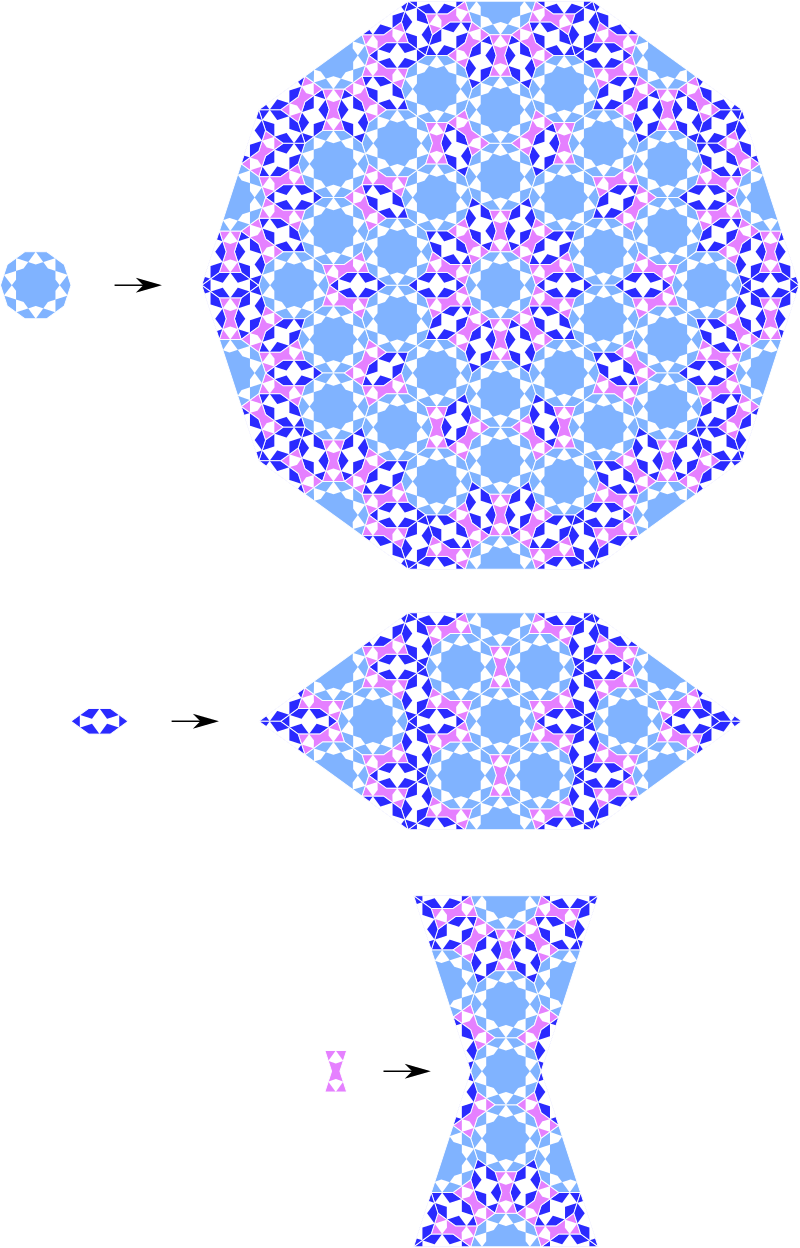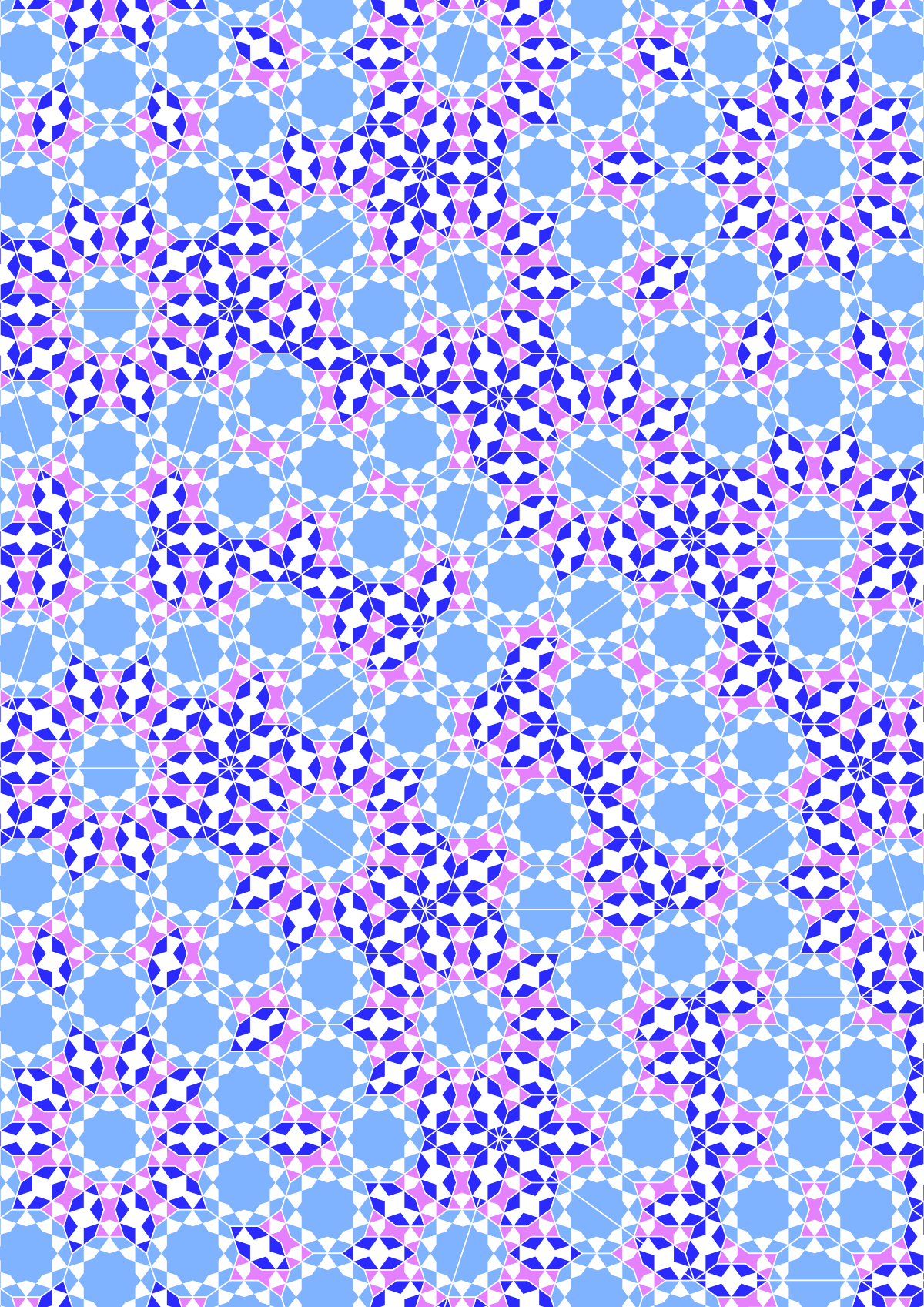Darb-I Imam Shrine
Discovered by
Info
The substitution tiling was derived from a mosaic at the Darb-i Imam Shrine in Isfahan, Iran. While the shrine dates back from 1453, [Lau2018] argues that the mosaic was created much later between 1715 - 1717.
The tiling relies on the regular decagon and two hexagons and has individual dihedral symmetry ‘$D_{10}$‘. It was published in [LS2007] but the complete set of substitution rules can be found in [Ten2008] .
Substitution Rule

Patch
 download vectorformat Darb-I Imam Shrine
download vectorformat Darb-I Imam Shrine
References
[Lau2018]
Lauwers, L.
Darb-e Imam Tessellations: A Mistake of 250 Years
Nexus Network Journal
2018,
20,
321–329,
https://doi.org/10.1007/s00004-018-0391-y
[LS2007]
Lu, P.J.; Steinhardt, P.J.
Decagonal and Quasi-Crystalline Tilings in Medieval Islamic Architecture
Science
2007,
315,
1106–1110,
https://doi.org/10.1126/science.1135491
[Ten2008]
Tennant, R.
Medieval Islamic Architecture, Quasicrystals, and Penrose and Girih Tiles: Questions from the Classroom
Bridges Leeuwarden: Mathematics, Music, Art, Architecture, Culture
2008,
297-304,
http://archive.bridgesmathart.org/2008/bridges2008-297.html